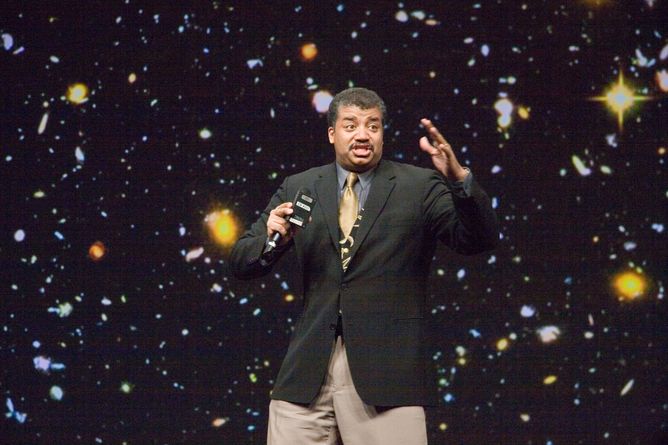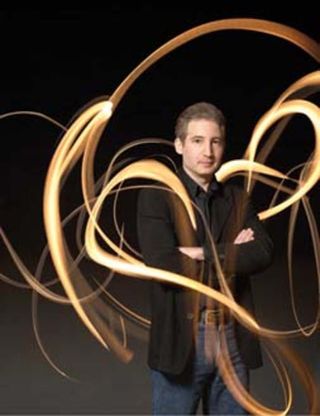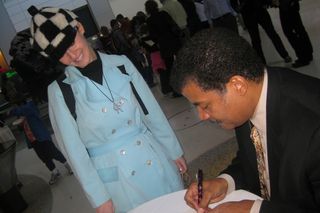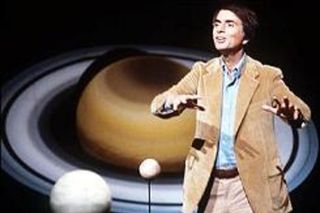
Does The United States Need a Science Laureate? (Op-Ed)

This article was originally published on The Conversation. The publication contributed this article to Live Science's Expert Voices: Op-Ed & Insights.
A bill to create a US science laureate is pending in Congress. Climate skeptics reportedly derailed a previous proposal in 2013, fearing President Obama would appoint a scientist who shared his policy goal to curb greenhouse gases.
Akin to the poet laureate position, the honorary one-year laureate appointment would give a respected scientist an official national platform to enhance the public understanding of science and attract students to STEM fields.
When the bill was first introduced in 2013, Wired suggested astrophysicist Neil deGrasse Tyson, theoretical physicist Brian Greene and marine biologist Sylvia Earle among other candidates to fill this science ambassador role.
But if the bipartisan 2014 bill succumbs to another fight over the politicization of science, it’s worth considering that perhaps we don’t need a science laureate. We already have de facto spokespeople for science – celebrity scientists.
Celebrity scientists/science ambassadors
I profiled Tyson and Greene at length in my book, The New Celebrity Scientists, which examines how our media-driven celebrity culture produces popular scientific stars. Both have esteemed records in doing exactly the things the Science Laureates of the United States Act of 2014 hopes to achieve. Tyson and Greene are exemplars of what the Act calls for: someone who can “embody, demonstrate, and articulate the importance and excitement of scientific research and education.”

For example, in the past few weeks, Tyson stressed his passion and commitment to communication, telling The Washington Post’s Style section, “I’m a servant of the public’s appetite for science, for the universe, for science literacy.”
Sign up for the Live Science daily newsletter now
Get the world’s most fascinating discoveries delivered straight to your inbox.
Tyson’s written several popular science titles, hosted a radio show and podcast StarTalk, as well as a reboot of the path-breaking 1980 TV show Cosmos. Next month he’ll host his own late-night talk show about science on National Geographic Channel. Tyson was named by Discover in 2008 as one of the magazine’s ten most influential people in science. Next month he will be awarded the 2015 Public Welfare Medal by the National Academy of Sciences, for his promotion of science for the public good.
What more public communication could Tyson do even with the honorable distinction as science laureate?

The same is true of Greene. His breakout 1999 popular book The Elegant Universe brought to wide audiences the ideas of his specialist area of string theory. Scholars consider Greene’s book a watershed moment in the popularization and public understanding of this esoteric subject.
He embodied his work. Discover called him “the public face of string theory.” The New York Times once called him “the cutest thing to happen to cosmology since the neutrino.”
After The Elegant Universe, Greene went on to write other well received popular science books. He also hosted two multi-part specials on PBS’s long-running science show, NOVA. With his wife, award-winning television journalist Tracy Day, he founded the World Science Festival, which aims to weave science throughout the rest of our culture. He is also a prime mover behind World science U, an online learning platform for science education.
Could he do more for the public understanding of science as a science laureate?
Deeper engagement via cultural celebs
The fame of Tyson and Greene, I argue in my book, resulted in part from the confluence of two historical trends related to the public understanding of science.

There has, first, been a trend towards scientists becoming cultural celebrities, a movement that had as a pivotal moment the 1980s broadcast of Cosmos presented by Carl Sagan. As the science historian Marcel Chotkowski LaFollette wrote in her book Science on American Television, “Sagan already had modest fame outside academe. Cosmos now propelled him to international stardom.”

Since then, today’s celebrity culture refracts abstract issues through the prism of personality. As cultural historian Leo Braudy wrote in his The Frenzy of Renown, “human faces are plastered on every idea and event.”

The second historical trend has been towards a deeper engagement with citizens on the part of scientists. Crucially, this involves scientists not speaking from on high as voices of truth or reason. Instead, as science communication researchers Matthew Nisbet and Dietram Scheufele noted, it involves inviting citizens to participate in trust-based, two-way conversations about science and its role in society.
For examples of such conversations, listen to Tyson on his StarTalk podcast discussing science and politics with actress and activist Janeane Garofalo. Or discussing science, race and science fiction with Star Trek actress Nichelle Nichols.

With his 2011 book The Hidden Reality, Greene sparked valuable conversations about the nature of science. The book explained the multiverse, the idea that our universe might be just one of billions that exist, each with its own particular characteristics. A Nature review criticized the book for presenting not reality but “unproven theoretical possibilities.” On this point, Greene emphasized the value for citizens to understand how scientific knowledge develops, “not just to learn about science that’s all settled, confirmed and in textbooks, but also to capture a picture of vital science in the making.”
Is a celebrity superior to science laureate?
Greene and Tyson are just two examples of prominent scientists doing exactly what a science laureate might do. Others include theoretical physicist Lisa Randall and cognitive scientist Steven Pinker. These figures are the public faces of science, who each communicate complex scientific ideas, illuminate the nature of science, and place science at the core of culture.
Their popular stardom sets them apart in another crucial way from a science laureate. The 2014 bill states that the laureate would be appointed by the elite National Academy of Sciences. The post therefore risks being a modern manifestation of a decades-old style of science communication: a talented, establishment scientist accurately transmitting facts to educate the public. But, for citizens, knowledge of science does not lead automatically to appreciation of science.
A scientific celebrity, by contrast, is more inclusive, more populist, and perhaps more democratic. Lasting fame cannot be solely manufactured. As cultural critic Louis Menand explained, a celebrity’s personality must connect deeply with public and social concerns, as Sagan did at the height of the Cold War.
Our popular culture – crucially – granted Tyson and Greene the legitimacy to speak in a sustained way on behalf of science. They cut through political partisanship to connect with the public. Citizens voted them stars.
This article was originally published on The Conversation. Read the original article. Follow all of the Expert Voices issues and debates — and become part of the discussion — on Facebook, Twitter and Google +. The views expressed are those of the author and do not necessarily reflect the views of the publisher. This version of the article was originally published on Live Science.












